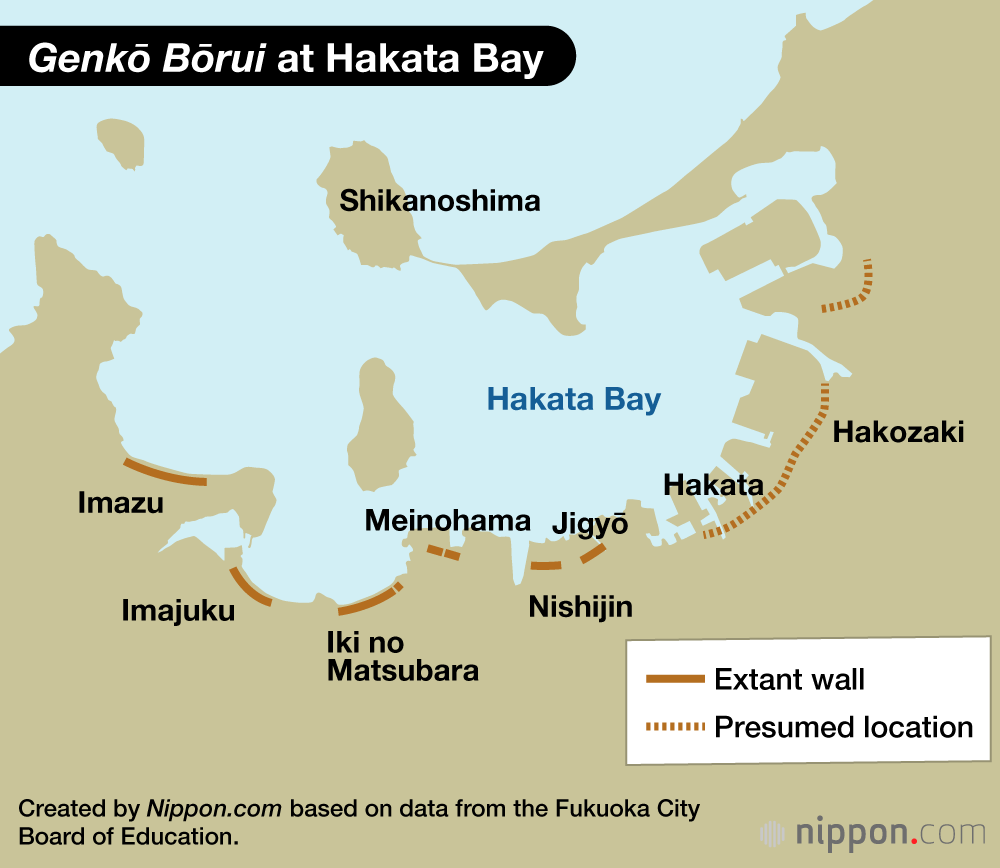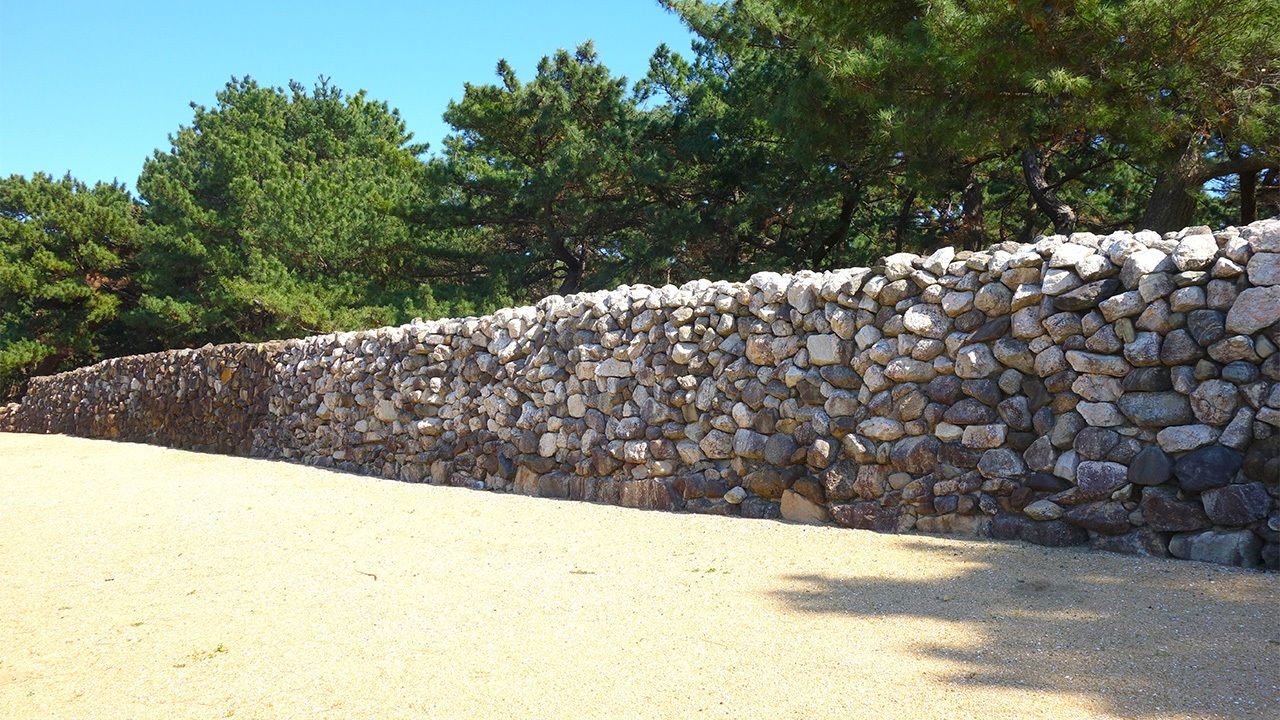
The Battle of Bun’ei: The First Mongol Invasion of Japan
History- English
- 日本語
- 简体字
- 繁體字
- Français
- Español
- العربية
- Русский
Assault on Hakata Bay
When Kublai Khan founded the Chinese Yuan Dynasty in 1271, the vast Mongol Empire already stretched across Asia and into parts of Europe. Kublai, who was keen to secure Japan’s support in his campaign against the Southern Song Dynasty, reached out to the Kamakura shogunate, who rebuffed the Mongol leader. Failing with diplomacy, Kublai in 1274 launched an invasion fleet from the southern tip of the Korean Peninsula.
The massive armada consisted of some 900 vessels ranging from large transports and supply ships to swift boats for landing troops and horses. The invading force, numbering in the tens of thousands, was made up of Mongol soldiers and fighters from Yuan-controlled regions, including a large contingent from China and Goryeo (Korea).
In what is known as the Battle of Bun’ei, the Yuan army laid waste the remote islands of Tsushima and Iki before turning for Kyūshū. The fleet entered Hakata Bay in the early morning of November 19 intent on subduing Japan.
According to former Kyūshū University professor Hattori Hideo, an expert on the invasion and author of several books on the topic, the Yuan army came ashore with little resistance and established three main beachheads along Hakata Bay. The brunt of the attacking force focused on the centrally located beach at Torikai, from where it moved inland toward the administrative center of Dazaifu.
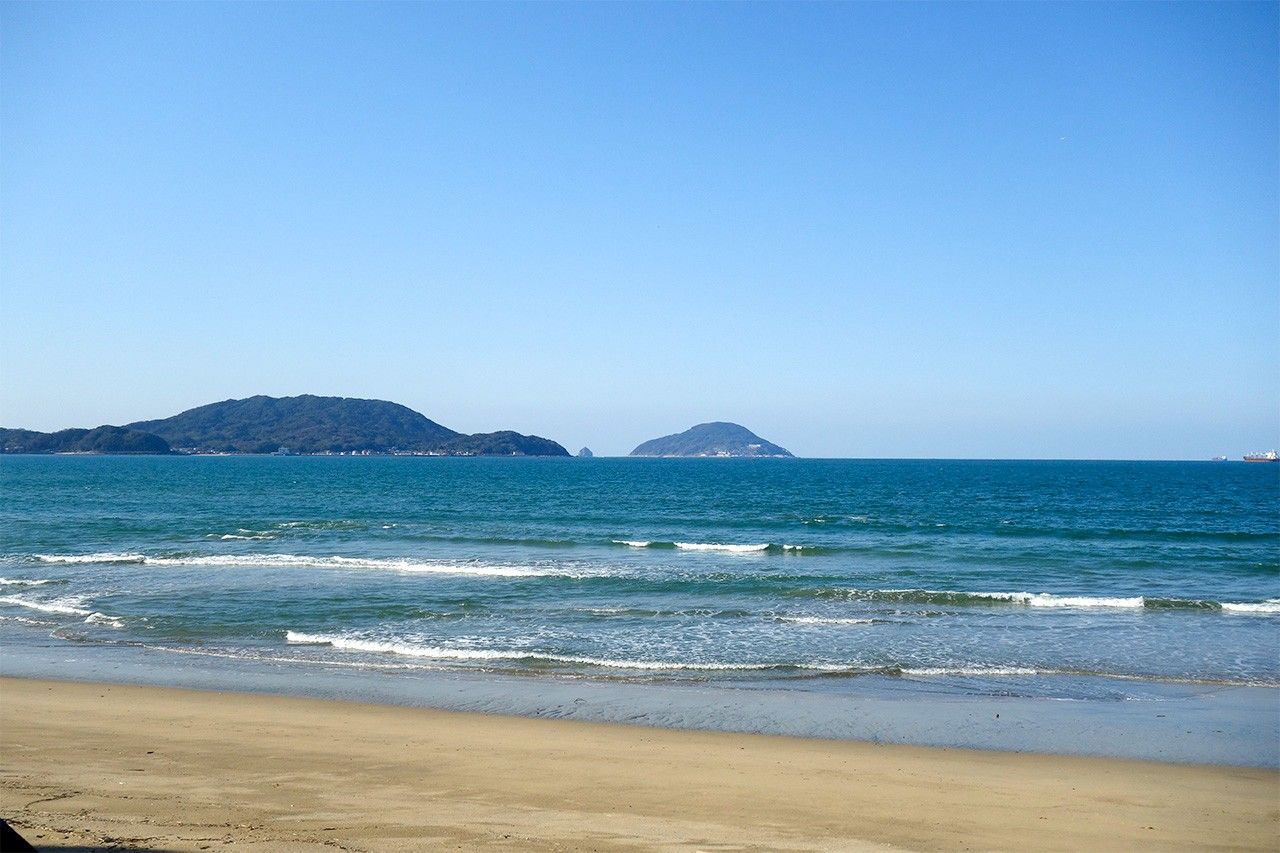
The beach at Imazu looking toward Hakata Bay and Genkai Island. The site was one of the landing areas of the Yuan army. (© Mochida Jōji)
Unknown Enemy
The foreign fighters were unlike anything Japanese samurai had ever encountered. Wielding spears and short bows, the Yuan army confounded the Japanese with their superior weaponry and cavalry and unfamiliar tactics, including lobbing exploding projectiles to sow confusion on the battlefield. The Mōko shūrai ekotoba (Illustrated Story of the Mongol Invasions), a series of paintings commissioned by samurai Takezaki Suenaga of Higo province (today Kumamoto Prefecture), depicts the chaos of battle. In one scene, Takezaki’s horse is shown gushing blood from arrow wounds and bucking wildly as a shell explodes nearby.

Yuan soldiers assault Takezaki Suenaga at Torikai in a scene from the Mōko shūrai ekotoba (Illustrated Story of the Mongol Invasions). (Courtesy the Kyūshū University Library)
The exploding shells were filled with gunpowder and were reported to explode with a deafening bang and a concussion that would send horses into a frenzy and temporarily incapacitate anyone in the immediate vicinity. An investigation of one of the munitions dating from the second Mongol invasion of Japan (1281) that was discovered off the coast of Takashima in Nagasaki Prefecture showed it to be a hollow, ceramic sphere measuring 13 centimeters in diameter. A CT scan by researchers at Kyūshū University found that the shell contained metal and ceramic shards, making it potentially lethal at close range.
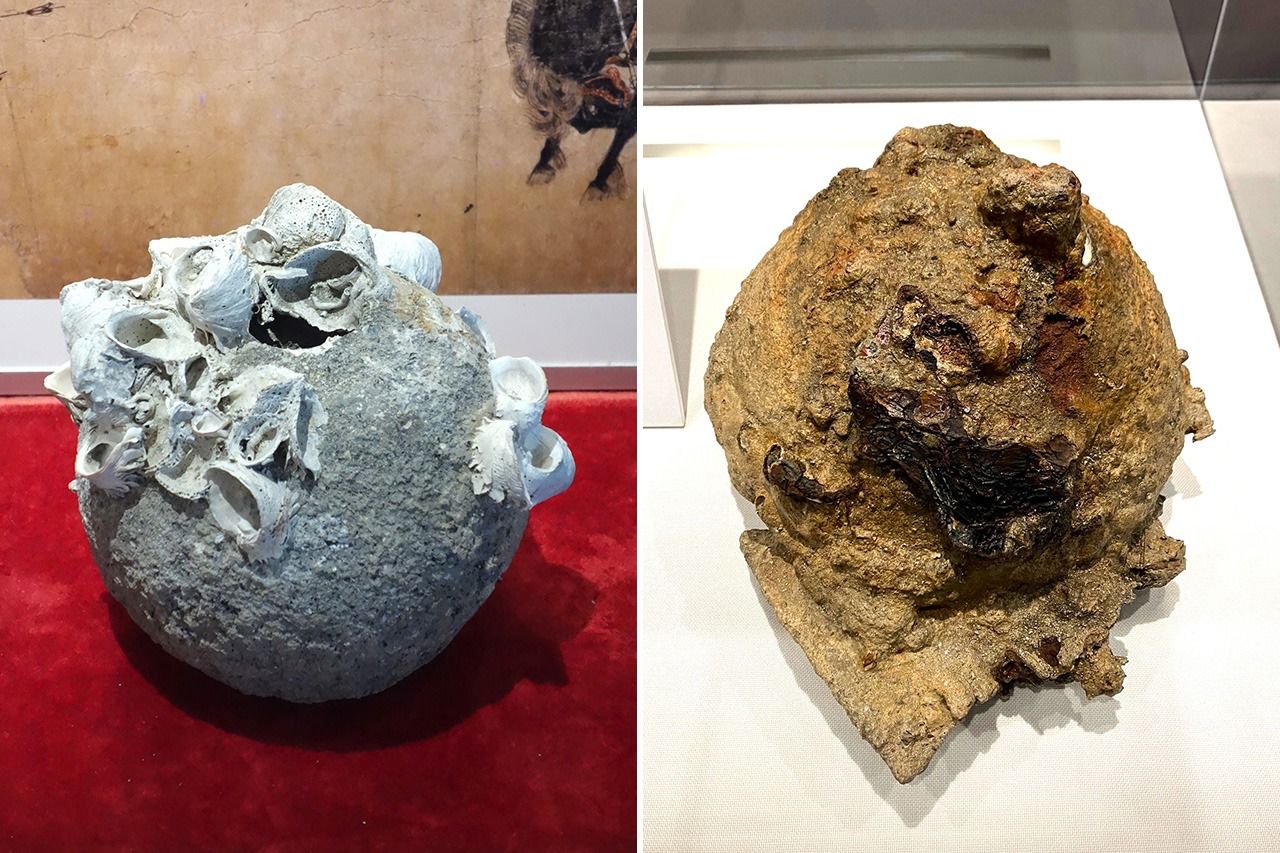
An exploding shell (left) and a Yuan helmet on display at the Matsuura Municipal Archeological Center. (© Mochida Jōji)
The Yuan fighters had an advantage over their Japanese adversaries in their use of short bows, which could be fired with deadly accuracy while mounted or on foot from both close and long range. The Japanese long bow, by comparison, was ill equipped for the type of battle the samurai found themselves in. Hattori characterizes the weapon as unwieldy. Designed for right-handed use, the bow had limited effectiveness for mounted fighters, who could only fire at combatants positioned to their left. These and other factors enabled the Yuan army to gain the upper hand early in the conflict and push the Japanese defenders back.
Targeting a Fort?
According to Hattori, the Yuan army chose Torikai as their main point of attack for its proximity to the kegosho, the chief defensive fortification along Hakata Bay. He postulates that the Yuan intended to seize the fort, which would give them access to stockpiles of weapons and other supplies and allow them to establish a foothold from where they could push further inland.
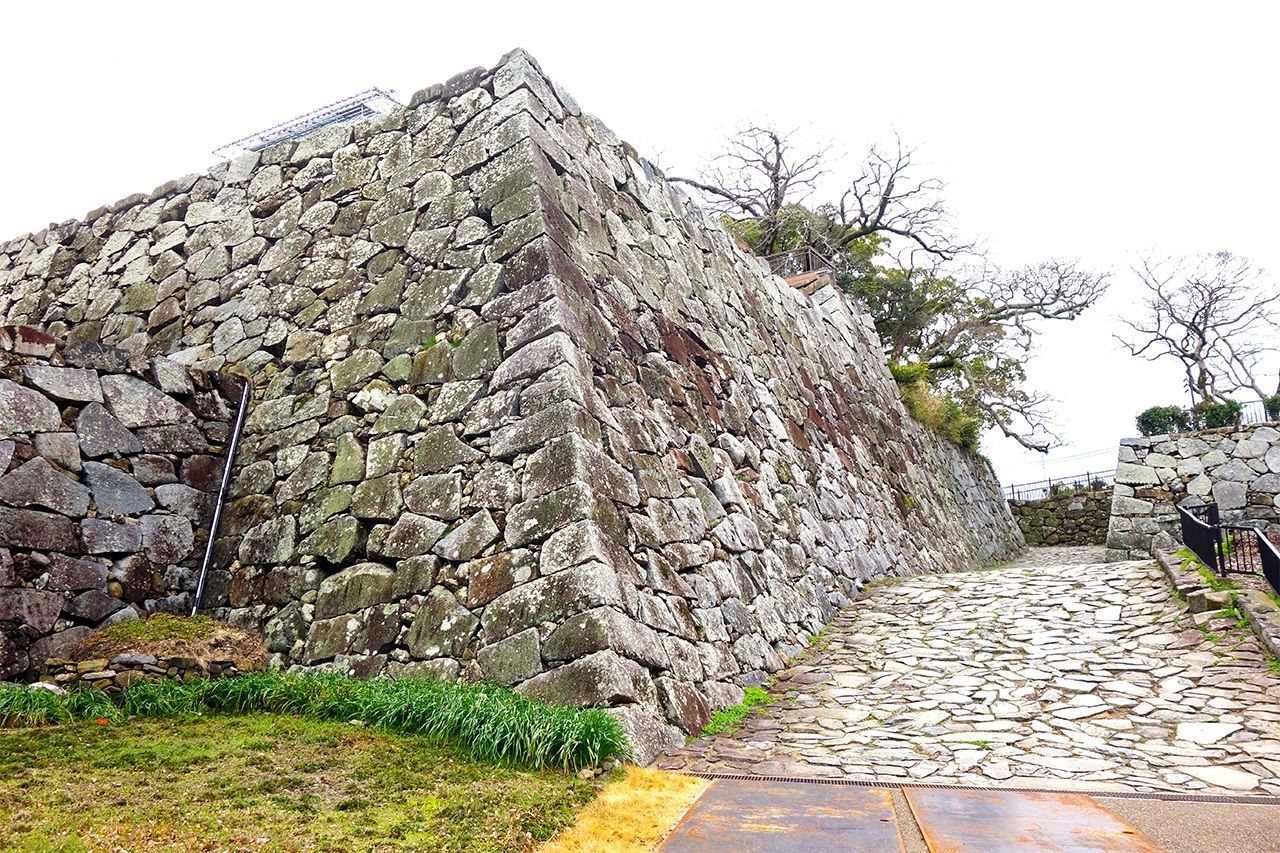
The site of the defensive kegosho. The structure was incorporated into Fukuoka Castle by daimyō Kuroda Nagamasa in 1601. (© Mochida Jōji)

Fukunaga Masahiro of the Kyūshū University Museum. (© Mochida Jōji)
This raises questions as to how Yuan military leaders came to include the kegosho in their plans as Japan had essentially cut off contact with the dynasty. Fukunaga Masahiro, an assistant professor at the Kyūshū University Museum, suggests that the reconnaissance information was carried over land and sea by merchants and Buddhist monks travelling between Japan and Southern Song China, the Korean Peninsula, and other places on the Asian mainland. Conversely, Japan learned about developments in the Yuan dynasty from the same sources.
Battle at Dazaifu
The standard view of the Battle of Bun’ei is that the Yuan forces attempted to take the kegosho, and failing, retired to their ships at dusk. During the night a fierce gale blew that destroyed many of the vessels and forced the fleet to withdraw back to the mainland. This rendition of events has spawned the legend of a “divine wind” (kamikaze) saving Japan, but another theory suggests that the Yuan withdrew intentionally, and that the invasion had merely been a show of force with the aim of compelling the shogunate to capitulate to dynasty demands.

Left: Yuan fighters attack at Soharayama, as depicted in Illustrated Story of the Mongol Invasions. (Courtesy the Kyūshū University Library); the peak of Soharayama today. (© Mochida Jōji)
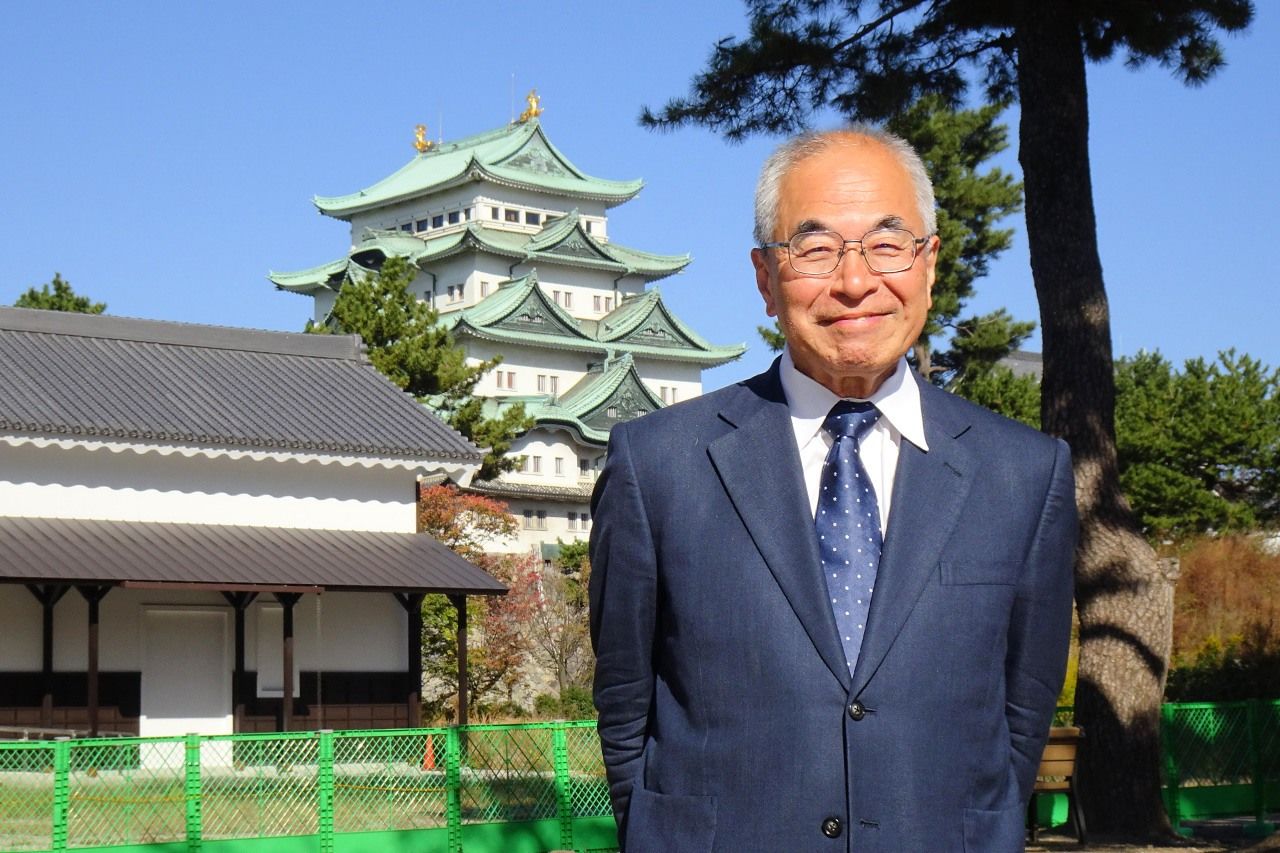
Hattori Hideo has taught at Kyūshū University and Nagoya Castle Research Center. (© Hattori Hideo)
However, Hattori has put forward a completely new theory that the invaders did not immediately withdraw as widely believed but advanced a considerable distance into the interior. In making his argument, he cites records that tell of fighting near the shogunal administrative center of Dazaifu four days after the Yuan army landed.
Established in the seventh century, Dazaifu served as a defensive and diplomatic outpost regulating contact with the Asian mainland for the central government, located far to the east in the Kansai region. Dazaifu was supported in its role by Hakata, which sitting on the water provided a buffer against the outside. Its fortifications stood ready to repel threats from the mainland, and it also boasted facilities to entertain visiting emissaries.
In his research, Hattori came across documents telling how Japanese forces positioned just north of Dazaifu at the Mizuki Fortress engaged the Yuan army. Like the kegosho, the fortification had high earthen embankments that Hattori argues provided the defenders a decisive advantage in repulsing the advancing Yuan horde and preventing them from sacking the important administrative center.
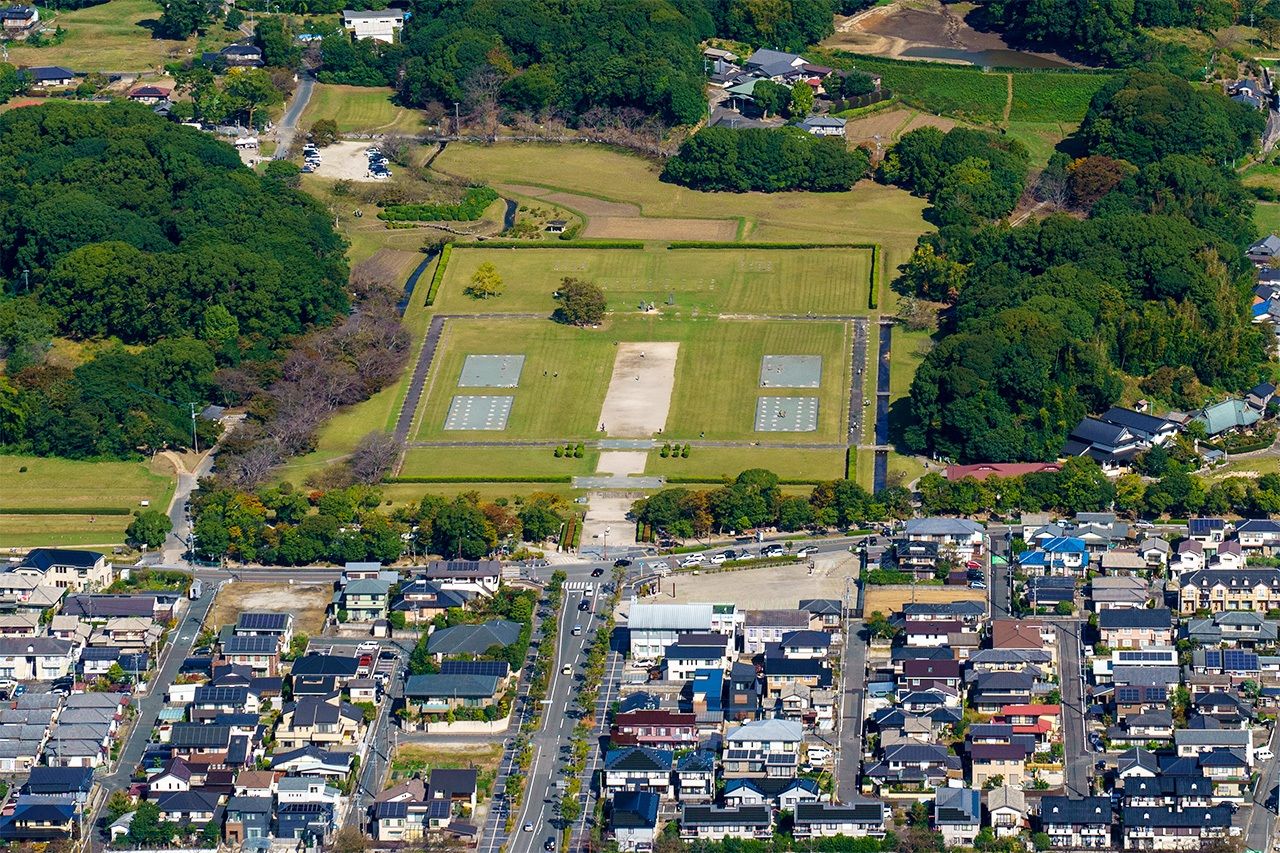
The ruins of the Dazaifu government offices. (© Jiji)
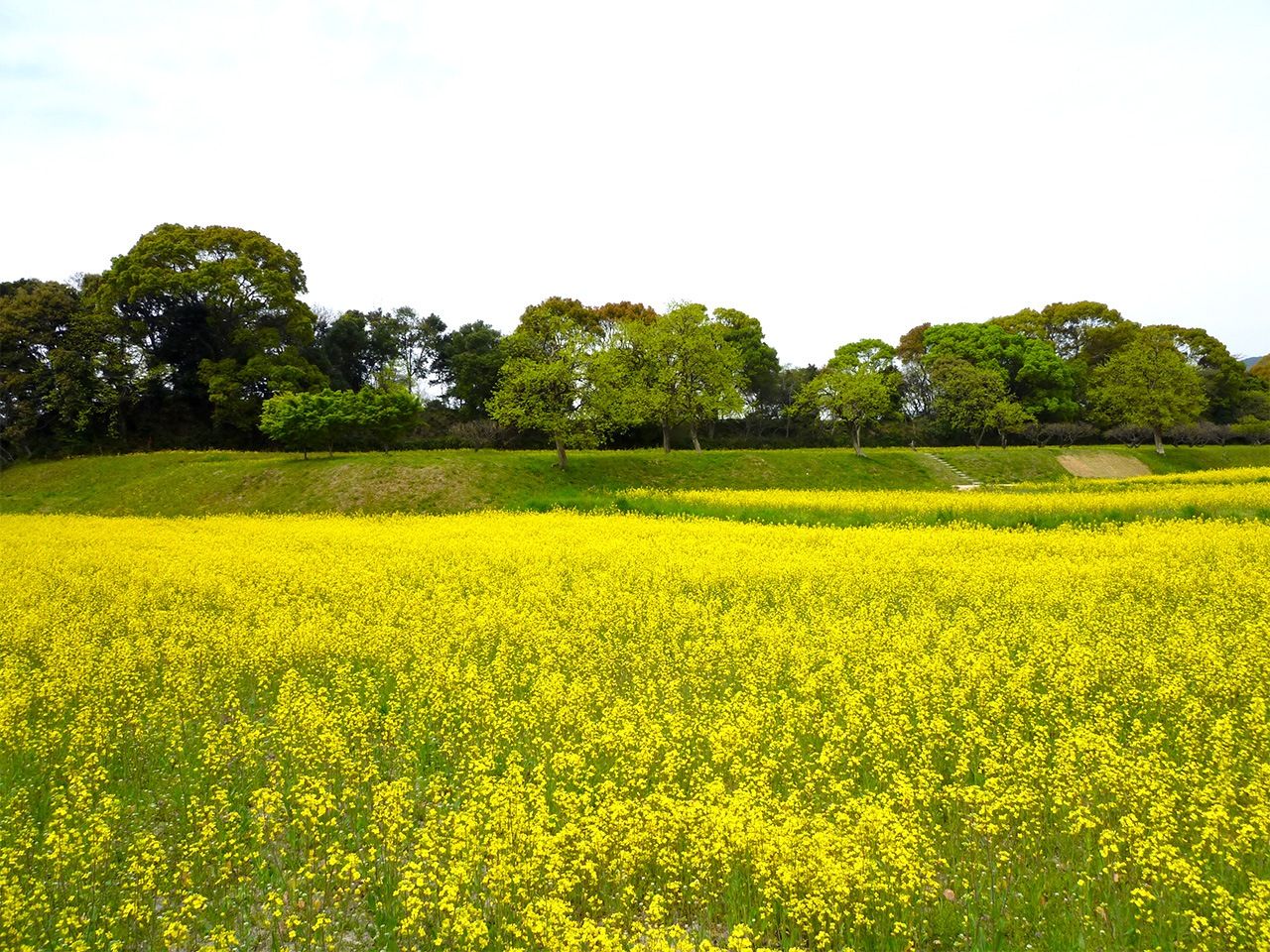
The ruins of the Mizuki Fortress. The earthen walls of the defensive structure are said to have towered nine meters high. (Courtesy Dazaifu municipal government)
The Yuan’s weaponry and tactics vexed the Japanese fighters, but the defenders enjoyed two pivotal advantages. The first was superior numbers. In preparation for a possible invasion, the shogunate had ordered its vassals in Kyūshū to bolster their defenses and to guard the northern coast of the island. The second was weather conditions. Storms are a frequent occurrence in the Japan Sea in autumn, which would have hampered any attempt by the Yuan army to send supplies or reinforcements.
Refuting the accepted view of a brief incursion, Hattori argues that the Yuan pushed into the interior over several days and only turned back from their campaign to capture Dazaifu when they met fierce resistance at the Mizuki Fortress, and it became obvious that they lacked the manpower to achieve their military aim.
Coastal Defenses
In the wake of the battle, the shogunate poured its resources into strengthening its defenses in Kyūshū and elsewhere in anticipation of a second Mongol invasion. Of particular concern to authorities was the Yuan cavalry, which had wreaked havoc on Japanese forces. As a preventative measure, a line of earth-and-stone walls (ishitsuiji) stretching some 20 kilometers was constructed along the edge of Hakata Bay. Much of the structure, called the genkō bōrui or anti-Mongolian bulwark, remains intact today.
One of the best-preserved parts of the genkō bōrui is at Iki no Matsubara, where there remains a nearly 200-meter stretch of wall. Measuring more than 2 meters high, the wall rings the perimeter of the beach. Fukunaga describes how once landed, the Yuan cavalry would first have to contend with the sandy footing, which would slow their advance, before contending with the wall, where shogunate forces would be raining arrows down on the invaders. Looking over the embankment toward Hakata Bay, it is easy to imagine the trepidation defenders felt at the approaching Yuan fleet.
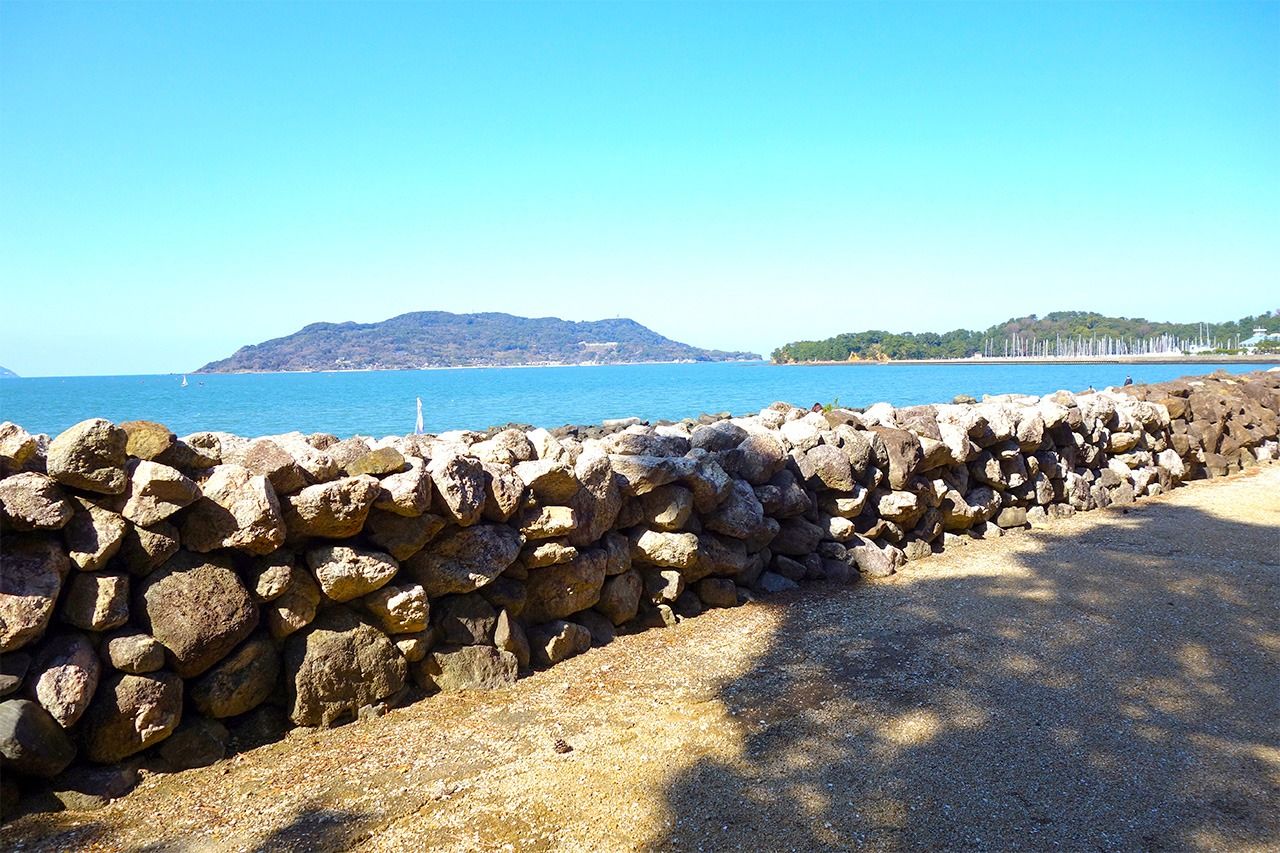
The genkō bōrui at Iki no Matsubara. (© Mochida Jōji)

A reproduction of the assault on the genkō bōrui at Iki no Matsubara as depicted in Illustrated Story of the Mongol Invasions. (Courtesy the Kyūshū University Library)
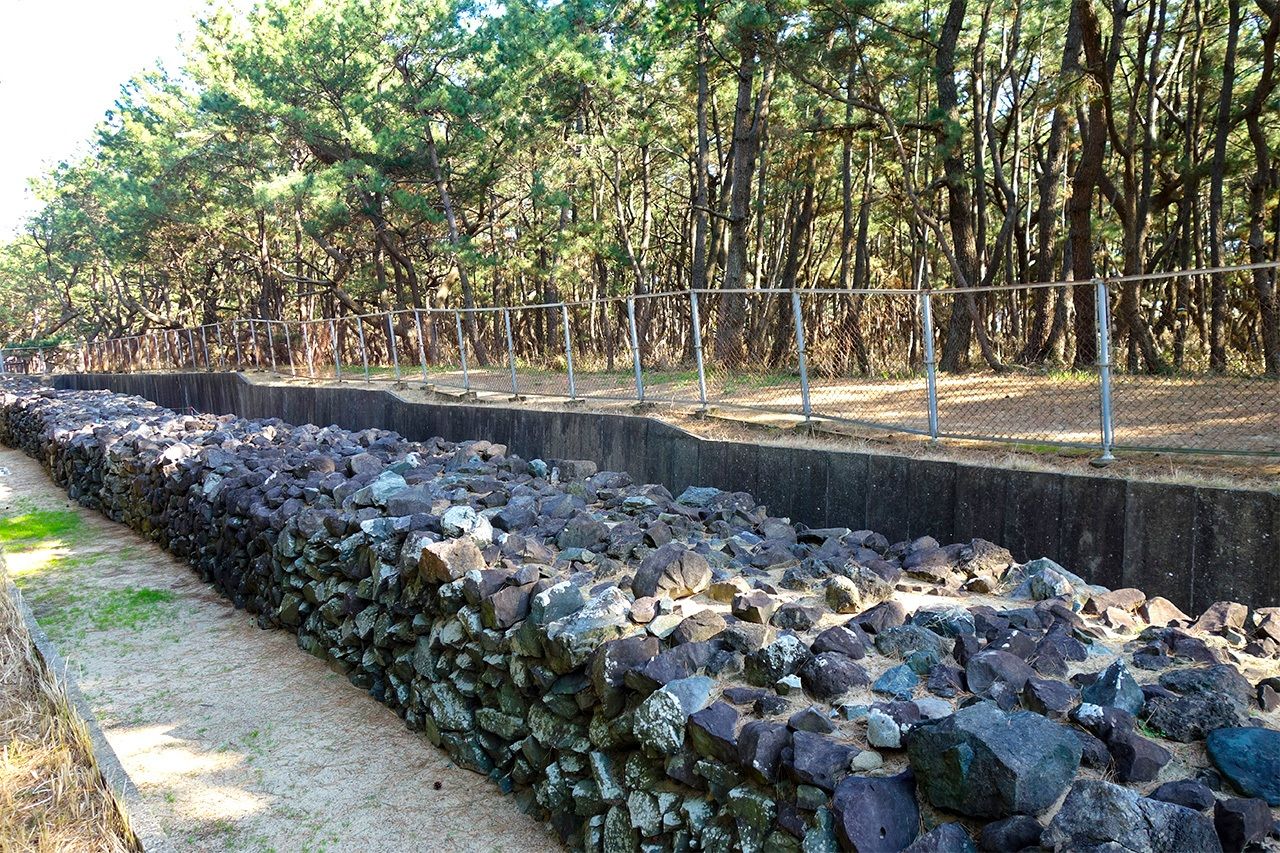
The ruins of the genkō bōrui bulwark at Imazu. (© Mochida Jōji)
When the Yuan army returned seven years later, it had less success against a better-prepared Japanese side. It failed to gain a foothold by landing forces at Hakata Bay as in the Battle of Bun’ei. The heavily guarded genkō bōrui and other Japanese defenses kept the invaders at bay on the water, where a storm stuck the final blow, ending the invasion.
(Originally published in Japanese. Banner photo: The genkō bōrui bulwark at Iki no Matsubara. © Mochida Jōji.)


